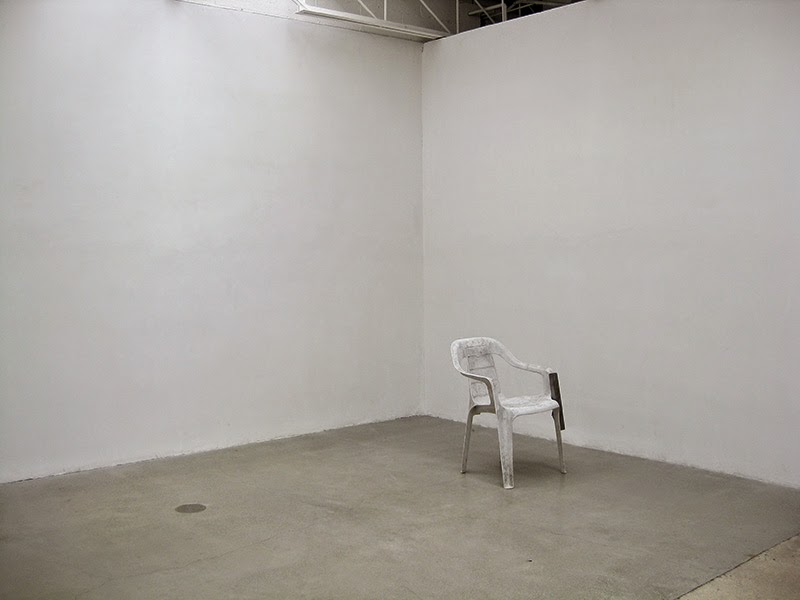Mathew Cerletty at Office Baroque

An adaptive logic, staying slightly ahead of predictability within a semi-consistent style so as to appear consistent (the first rule of any good game), Cerletty’s long run involves the interminable re-routings of someone evading, or being evasive. Any broad assertions about Cerletty’s work are made to come prepackaged with the clarification “except of course when it isn’t.” Identity, rather than constructed as “sameness over time” path, instead attempts fracturing, balloons to a meta-level, where the map looks like maze, endless deferrals, backtracking notes in succession but never in any repetition.
“slight deviations from normalcy”
“most exciting when you make something that’s not immediately recognizable as your own”
“like a jigsaw puzzle link.”
It could force us to look at individual paintings, but the paintings themselves, in their askew settings, also defer “sense.” With their illustrative clarity they offer hints, appear as clues, to some pre-established mystery of what their direct and illustrativeness - highly rendered petroglyphs - might be telling us, appearing as so much evidence, but the mystery never resolves itself, as it shouldn't in all “great art” until you feel as though maybe this is the game, of course, being played. The work is thus premised on having the illusion of containing, or being able to convey, some sort of necessary information but never, of course, actually revealing it, or even revealing the rules of the apparently very logical game, as mysterio objects and totally fun. When it works, such as the Algus Greenspon show, the work creates a sort of vertigo, a reeling from having truly been a culprit one step-ahead of the viewer as detective.


.jpg)






